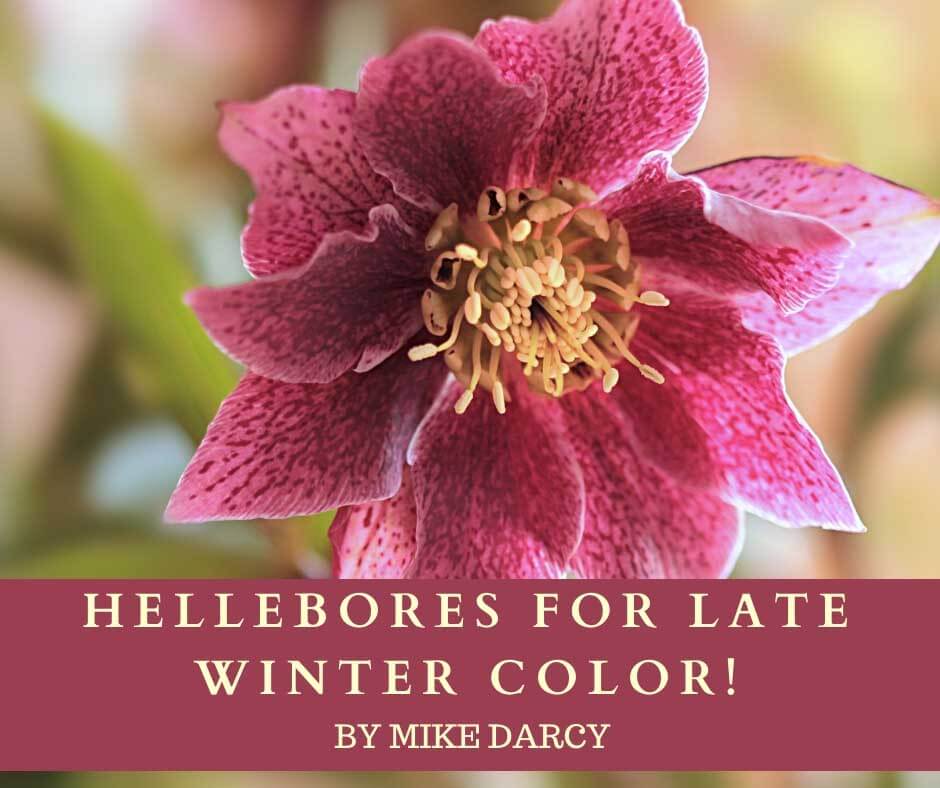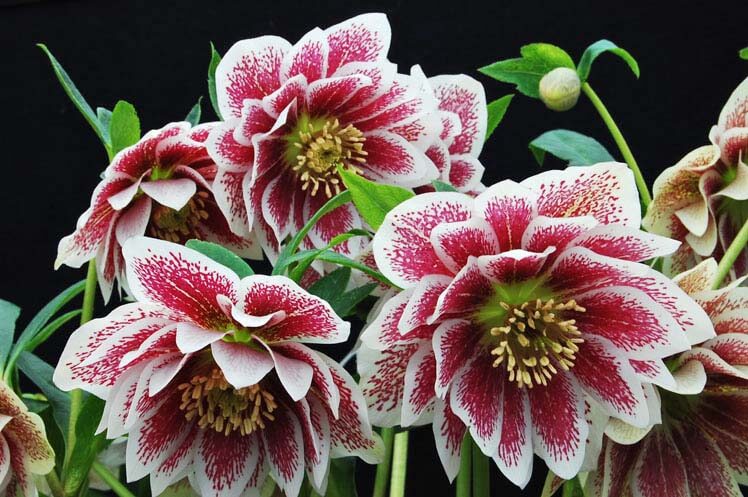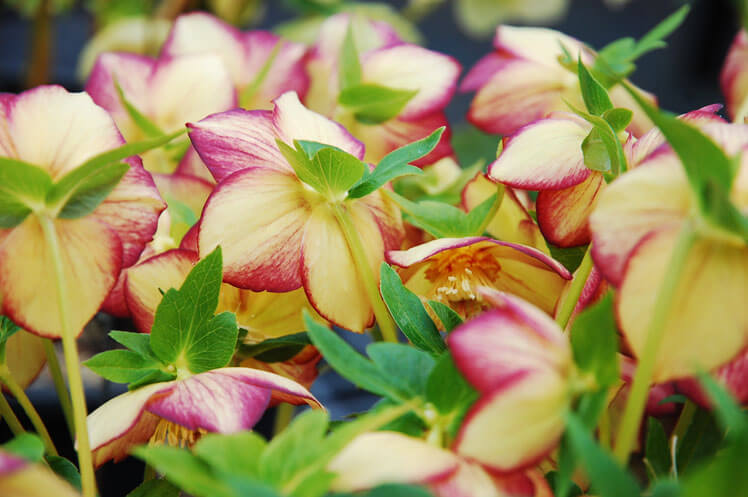
It has been unseasonably cold here in the Pacific Northwest. In Portland, Oregon, we have had temperatures down in the teens, which is not the norm. To make matters worse, we had an extended period when the temperature did not get above freezing. The ground is very dry, which causes additional stress on plants when the ground is frozen. Walking out into my garden this morning, I must say it is looking very bleak. The Eugene area has had some snow, which is a good insulator that offers cold protection for plants, but the Portland area has not had any significant snow. Our ground is bare and dry. Nonetheless, the hellebores are beginning to show themselves.
However, we have many benefits to be living and gardening here, and one is the hellebore (Helleborus spp.), which is a true winter gem. Most are hybrids of the winter-blooming Christmas Rose (Helleborus niger) and later, midwinter- to early spring-blooming Lenten rose (Helleborus orientalis). All can withstand the cold, wind and rain and not only survive, but thrive. It is also one plant that I have heard deer will not eat. Hellebores were very popular in the Midwest in the early 1900s, and then their popularity diminished. In the early part of this century, they made a resurgence and have become increasingly popular in Pacific Northwest gardens. Plants are being bred to have stronger stems and an ever-increasing palette of color.
The Best Hellebores

Hellebores should be on every gardener’s must-have perennial list. Their most outstanding attribute is that they bloom in winter when most other perennials are sleeping the deep sleep, but their evergreen foliage is also a nice, year-round bonus. When planted in masses, they even make a nice groundcover. Even novice gardeners will find these shade-lovers easy to grow. They’re even deer-resistant.
As I write this column in early December, there are flower buds beginning to show their color on some of my plants. I have seen hellebores even blooming in the snow in January. A particular variety that has been outstanding in my garden, called ‘Jacob Classic’, is from the Gold Collection®. This is an early bloomer with white flowers that  tend to face forward instead of downward, as many Hellebores do. It will begin flowering in January and continue for at least two months. It makes an excellent container plant, especially by an entryway, as the early blossoms provide winter cheer.
tend to face forward instead of downward, as many Hellebores do. It will begin flowering in January and continue for at least two months. It makes an excellent container plant, especially by an entryway, as the early blossoms provide winter cheer.
Another group of hellebores is the Winter Jewel™ Strain. The flowers in this series provide some apricot, yellow, white, and rose-red bloom colors that are relatively new for hellebores. I have two of these that have performed will in my garden and provide some striking winter color. These are ‘Painted Double’ and ‘Golden Sunrise’. As the name implies, ‘Painted Double’ has double flowers of white with rose-red speckles that look painted. The cheerful ‘Golden Sunrise’ has ruby-edged single flowers that turn slightly downward to reveal the soft yellow backside of the petals.
Growing Hellebores

Hellebores like to be planted in soil that is rich in compost, such as Black Gold® Garden Compost Blend. They also perform better when given some shade from the hot afternoon sun. Hellebores make excellent plants for under a large tree where they can benefit from the filtered light that falls from between the branches. Once established, they can become a permanent part of the garden and require very little maintenance.
Hellebores aside, many Pacific Northwest gardeners successfully grow plants that are considered marginally winter hardy. With our past relatively mild winters, many have survived with minimal protection. This winter is sure to prove which plants are marginally winter-hardy and which are not. In my garden, I have a Gunnera tinctoria that I consider marginally winter hardy. Luckily, several weeks ago, I mounded the crown with Black Gold Garden Compost Blend, and then on top of that I placed the huge Gunnera leaves that I had removed from the plant. The Gunnera leaves will help keep the conditioner from blowing away in the wind. Hopefully, this method will provide the insulation the plant needs to survive. I have done this in winter’s past, and it has worked.

With the weather as cold as it’s been, there is not much a gardener can do to protect plants without a protective greenhouse or sunroom, though I always have a few tender plants that I put on a garden cart and take into my unheated garage. (My prediction for this spring is that garden centers will see a surge in sales when spring finally arrives with gardeners buying plants to replace those that couldn’t take the cold.) In the meantime, get into the spirit of this season with a visit to your garden center, and check out the holiday displays, which are certain to include a few choice hellebores.
